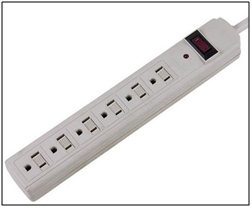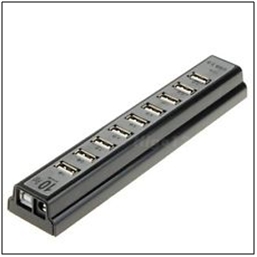Home › Electrical Engineering Forum › General Discussion › Choosing the right power strip
- This topic has 0 replies, 1 voice, and was last updated 11 years, 2 months ago by
Steven Mill.
-
AuthorPosts
-
2013/11/29 at 4:08 pm #10692
Steven Mill
ParticipantWhen it comes to consumer electronics and domestic energy usage, there is a lot of focus on reducing consumption. Consumption reduction primarily focuses on managing the power and electricity flow within domestic setups.
In lieu of the urban development and also the technological impetus, a lot of change can be seen in terms of the appliances we use. Now with the increase in the number of appliances and devices such as computers, TVs, gaming consoles etc, there is an inherent need to manage the power that they consume.
Why? While these devices are adding much comfort to our daily lives, they are also power hogs. As per research done by the National Renewable Energy Laboratory, appliances such as DVD players, gaming consoles, external monitors and printers can add nearly 10% to the utility bills. This percentage is quite a lot considering how the manufacturers of these devices are trying to make them more energy efficient.
Vampire Loads and Power Strips
The key to managing supply and power consumption in your home is by identifying the problem. Most people wrongly consider that the appliances are sucking more power. As we are technologically advancing, devices are becoming more and more energy efficient.
The problem however lies in the fact that some electronics continue to draw load even after they have been turned off. In the electrical lingo, it is referred to as the vampire loads. It refers to the energy and power that is being wasted even while the device is not in use.
An ideal point of solution to begin is with the power strips. Most consumers do not consider power strips to be a worthy investment in their saving strategies. However, advanced power strips can provide you a chance to manage the vampire loads and make full use of energy efficiency.
Benefits
The key advantage of advanced power strips is that they are pretty easy to use and there is no need for any installation. Secondly, they are not pretty high tech to be confusing to some. It is a simple solution which makes sure that the electronic devices within your home are not using up electricity while they are off.
Using different types of advanced power strips, it is possible to save a lot of energy. It is basically an activity monitor that ensures that no power is being wasted or a device drawing vampire load.
Types of Advanced Power Strip
The most important part is to decide which power strip is best for you. This is where the customization factor comes in. As a user, you would know what kinds of devices are being mostly used in your home. This helps you decide which type to opt for.
The commercially tested and available types are :
- Time Power Strip
A power strip solution that automatically turns of outlets based on a preset schedule. - Activity Monitor Power Strip
A power strip solution that looks for signs of activity in the room and turns of outlets if none is detected. - Remote Switch Power Strip
A power strip solution that can be turned off the user through a remote switch. - Master Controlled Power Strip
A power strip solution which acts when a primary device is turned off by the user. The strip would automatically turn off the controlled outlets where the peripheral devices are plugged in. - Masterless Power Strip
A power strip solution that comes to action when all of the controlled devices are turned off. The power strip turns off power to those outlets completely, ensuring no vampire loads.
The above provided details of the different types of advanced power strips gives a pretty fair idea as to which one is suited to your needs. For instance, the master controlled power strip is ideal for those who have more than one computer or related peripheral devices. Likewise, the activity monitor power strip is ideal for the domestic user.
The cost of these advanced power strips varies as per the sophistication of the design. For instance, the activity monitor power strip is on the pricey side since it employs the usage of sensor. The sensor technology is expected to be made cost effective in the coming years or so. Among the types that have been explained above, the remote switch power strip is the cheapest of the lot.
Conclusion
Improving the energy efficiency of our homes isn’t about installing new appliances or completely overhauling any system. It is more about understanding how smart solutions can be employed to reduce the supply. The advanced power strip is an ideal example of managing this. Not only is it a tested method, but the diversity of design available makes it possible for everyone to find their niche kind of power strip.
- Time Power Strip
-
AuthorPosts
- You must be logged in to reply to this topic.

